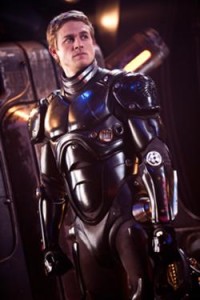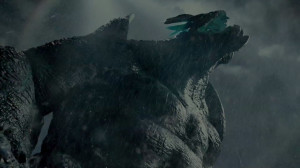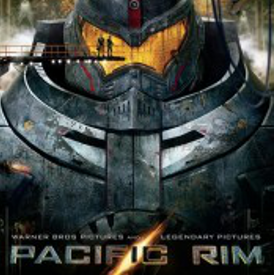
I don’t know about you, but I really liked Pacific Rim. I found it a delightful tale about how humanity can overcome any problem so long as we put our differences behind us. It also featured a sequence with Charlie Day getting into some shennanigans with Ron Perlman, so that was also pretty great.
However, I’d like to talk about the main character in this week’s post. Raleigh Becket is who we spend most of the film with, and since his arch is the most complete of all the characters, I figured I’d stick with him.
Spoilers, of course, follow.
Here’s the thing about Raleigh, he’s not the most likable guy. When we first meet him, he’s cocky and more excited than anxious about fighting giant monsters. And why not? He and his brother have fought off a bunch of other kaijus, and always won. It’s hard to blame Raleigh for this attitude, as it’s explained that humanity’s view on the kaijus is (at the start of the movie) little more than natural disasters – things to be feared and weathered, but to shoved out of mind afterwards.
We know he’s going to get his attitude checked. He has to. See, Jaegar pilots like Raleigh and his brother, Yancy, are neurally connected by something called “The Drift” which lets them handle the stress of piloting a giant robot.
Don’t ask me to explain it.
 So when the two are stuck in a battle they can’t handle, and Yancy is killed, Raleigh is still connected to him through The Drift, and experiences his brother’s death through his own eyes. It’s a terrifying experience, and soon, Raleigh quits being a pilot.
So when the two are stuck in a battle they can’t handle, and Yancy is killed, Raleigh is still connected to him through The Drift, and experiences his brother’s death through his own eyes. It’s a terrifying experience, and soon, Raleigh quits being a pilot.
Thus, we’re introduced to his arch. Raleigh’s story is one of coming to terms with loss, and redeeming himself in his own eyes. We see him next a few years later. He’s working on the anti-Kaiju Wall, a vain attempt to keep the monsters from advancing past the Pacific Rim. He’s not in the best shape. He volunteers for dangerous jobs, keeps to himself, and stays quiet when he watches a kaiju on television, break through a similar piece of the wall.
Then his old boss comes calling. The Jaegar pilots are all but dead, and he needs Raleigh’s expertise. Initially hostile to the idea, he eventually mans up and tags along, insistent that he’ll need a new pilot since his brother is dead.
 It’s hard to pinpoint exactly when Raleigh’s transformation takes place, but I like to think it happened offscreen. I think it happened after his brother was killed, but before he was recruited back into the Jaegar program. After all, once he’s back in the Jaegar program, he doesn’t take that long to reacclimate to life there, or to find a new pilot.
It’s hard to pinpoint exactly when Raleigh’s transformation takes place, but I like to think it happened offscreen. I think it happened after his brother was killed, but before he was recruited back into the Jaegar program. After all, once he’s back in the Jaegar program, he doesn’t take that long to reacclimate to life there, or to find a new pilot.
The man had his whole life taken away from him. He went from being a cocky airhead to a humble, quiet man. He doesn’t fight the kaiju out of vengence or out of vanity, he does it because he’s good at it and it needs to be done.
That, I think, is the message behind the whole film. It’s people coming together and doing what needs to be done, because no one else can do it. It’s a good message, and it’s a good film. Check it out sometime.











I definitely likes Raleigh’s arc a lot – and I think Hollywood in general can learn a whole mess of storytelling ideas from watching Pacific Rim with an open mind, but something that’s been making it’s rounds online that really made me appreciate the overall characters arcs in this movie is the perspective that Raleigh isn’t actually the protagonist: Mako Mori is.
It’s not hard to argue that she, not unlike Raleigh, undergoes the Campbellian Hero’s Journey – but her’s is honestly easier to figure out, especially if you assign Raleigh as the role of her mentor. In fact, in some interviews, del Toro has referred to her as the lead, not just the leading female.
Not at all to discount Raleigh – unlike pretty much every white/male protagonist, he sees and understands this world and is more than willing to *talk* about his troubles and listen to Mako’s. He’s not mocked in the world out by the audience for allows his emotions to be a external part of who he is and that’s straight-up applaudable. There’s so much this movie did right – it’s fascinating to approach pieces of it from alternative perspectives.
What do you think?